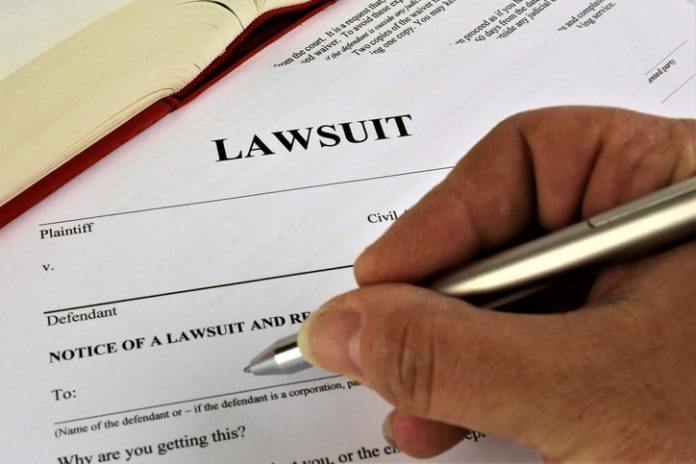This article is written by Sonali Chauhan, a student of Lloyd Law College, Greater Noida. The author, in this article, has discussed the concept of Waiver of Tort Claim.
Table of Contents
Introduction
Waiver of Tort enables a complainant to recover the gain/benefit from his/her wrongdoings acquired by the defendant. There’s nothing more, nothing less. Waiver of Tort does not attempt to remedy a loss by restoring the corresponding gain from the defendant to the plaintiff. It’s not yet trying to punish a defendant for wrongdoing. Rather, the waiver of tort seeks to prevent a defendant from taking advantage of his or her wrongdoing by compelling the disgorgement of the resulting gain. Thus, the amount legitimately claimed in the waiver of tort is the amount of the defendant’s benefit or gain, net of any reasonable expenses incurred by the defendant in order to obtain that gain.
History and General Principles
General Principles
The doctrine called “waiver of tort” is often regarded as an offshoot of the civil law of restitution. The principle underlying the doctrine is that a complainant who has been wronged may elect not to claim a remedy for tort and may instead claim a remedy for restitution. The plaintiff is thus told to “waive the tort” – somewhat inappropriate. This description is inappropriate because it connotes inaccurately that the complainant has set aside the claim for tort. In fact, in order to access alternative and sometimes more lucrative remedies available from the restitution law, the plaintiff has put aside only the tort law remedies for the claim.
The Law of Restitution, 6th edition, Goff and Jones explain the concept in the following way:
A person upon whom a tort has been committed and who brings an action for the benefits received by the tortfeasor is sometimes said to “waive the tort”. Waiver of tort is a misnomer. A party only waives a tort in the sense that he elects to sue in restitution to recover; he has a choice of alternative remedies. But the tort is not extinguished. Indeed, it is said that it is the sine qua non of both remedies that he should establish the tort has been committed. (Emphasis added.)
Similarly, in The Law of Restitution, Maddaugh and McCamus note that waiver of tort:
[…] seems to have engendered an undue and needless complexity . . . In essence, the concept is really quite simple: in certain situations, where a tort has been committed, it may be to the plaintiff’s advantage to seek recovery of an unjust enrichment accruing to the defendant rather than normal tort damages.
It is essential to explain further what is meant by “waiver of tort” as this area of law is often clouded with imprecise terminology that has confused the principles of doctrine.
The problem is apparently the use of the term ‘unjust enrichment’. In describing cases where the complainant’s remedy is measured by the wrongful gain of the defendant, jurists have often commented that the remedy is for “unjust enrichment” or for “restitution”.These references, however, do not refer to the cause of unjust enrichment, which requires evidence of a tripartite cause of action, namely: (1) the defendant’s enrichment; (2) the complainant’s corresponding deprivation; and (3) the absence of a juristic reason for the enrichment. Therefore, on a conceptual basis, it is more helpful to refer to situations where disgorgement of the profits of the defendant is granted as instances of “wrongful enrichment,” “restitution for wrongs,” “unjust enrichment by wrongdoing” or “disgorgement”.
When we consider the distinction between the cause of action for unjust enrichment and disgorgement remedy, the distinction is attenuated. In the former case, the defendant is required to “give back” the property acquired from the complainant, which is the “corresponding deprivation.” The defendant is required to “give up” property acquired from any source as a result of the wrongs committed against the plaintiff in the case of the disgorgement remedy.
Waiver of Tort and Assumpsit Indebitatus
There is a long and complex history of waiver of tort. The doctrine emerged in the common law courts as a response to the limitations of the ancient forms of tort pleading. In the face of the limitations of the old forms of pleading and the growing influence of the Court of Chancery, the common law courts resorted to the use of assumpsit indebitatus in order to provide a remedy where the action failed as a claim of tort. Accordingly, the doctrine was based on the common law courts ‘ desire to provide a remedy that would do justice among the parties in circumstances where tort law was deemed inadequate to do so and was based on the principles of good conscience, fairness, and justice.
Historically, assumpsit actions have been used to bring claims that would now clearly be pleaded in negligence as claims. Early cases of an express assumpsit (which were essentially contract-based claims) were brought with regard to negligent performance of a contractual undertaking. In these cases, the complainant sought to recover damages caused by the defendant’s failure to perform a contractual undertaking due to physical injury to a person or property.
In Moses v. Macferlan,(1760), 2 Burr 1005, which is widely regarded as the origin of both the waiver of tort and the law of restitution, Lord Mansfield rejected the argument that where there was no express or implied contract, no action in assumpsit could lie. He stated: “[if] the defendant be under an obligation, from the ties of natural justice, to refund, the law implies a debt and gives this action [to recover money had and received to the plaintiff’s use] founded in the equity of the plaintiff’s case, as it were upon a contract (“quasi ex contractu,” as the Roman law expresses it).”
It is commonly assumed that the waiver of tort originated with cases of usurpation of public office, especially where the usurper had sold improperly collected goods in connection with the office. Such activities have been used as a grounds for recovering money from a public office usurper. The use of indebitatus assumpsit also had procedural advantages, enabling complainants to avoid the issues associated with the strict requirements of the old form of pleadings.
In United Australia Ltd. v. Barclays Bank Ltd., the House of Lords noted that historically, waiver of tort was seen as nothing more than a choice between possible remedies at a time when combining remedies or pursuing them in the alternative was not permitted. The House of Lords argued that the presumed remedy exclusivity was wrong. Waiver of torture does not require that a complainant make an irrevocable choice about the nature of his claim. Rather, the House of Lords concluded, waiver of tort was to be viewed as a choice of remedies available until judgment was satisfied.
What is the Waiver of Tort?
There has been a waiver of tort since the 17th century. It originated as a somewhat desperate effort to find a contractual basis for what was essentially a restitution claim before recognizing the concept of restitution.
The origin of the doctrine lies in the phrase “waiver of tort and suit in assumpsit.” Assumpsit was the historical background of many “quasi-contract” restitution claims of the modern common law. When the waiver of tort first came into being, the idea was that the plaintiff really had to’ waive’ the tort in order to bring an assumpsit claim. By waiving the tort, the plaintiff would in fact ratify the conduct of the defendant, thus creating a quasi-contractual relationship that would allow the claim to be assumpsit. The court could then argue that on behalf of the plaintiff, the defendant had acquired the benefits.
All this was an elaborate fiction of Course. In United Australia, Ltd. v. Barclay Bank, [1940] 4 All E.R. 20, The House of Lords recognized that the so-called’ waiver of tort ‘ does not require the complainant to waive a claim of tort or ratify the tortious conduct of the defendant.
Waiver of tort is, therefore, a misleading name for a doctrine that allows the tortious behavior victim to obtain disgorgement of benefits rather than compensatory damages. As Professor McCamus explains, “the basic idea of a claim for waiver of tort is simple. In tort, the damage at the time of conversion is the value of the property. However, if the defendant has sold at a price exceeding the value, a disgorgement or waiver of the tort claim would allow the plaintiff to recover the defendant’s windfall and claim the full proceeds from the defendant’s sale”. Thus, the plaintiff does not have to’ waive’ the tort; instead, he/she pursues the tort claim and then elects to’ waive’ the remedy of damages, instead claiming the defendant’s wrongfully obtained benefits.
Canada’s law on waiver of tort is far from being settled. There remains disagreement as to whether the waiver of tort is merely an alternative remedy to the damages or whether it is an independent cause of action. This is important because if the waiver of tort is no more than a remedy, the complainant will always have to prove complete tort (duty of care, causation, damage) to get disgorgement. If the waiver of tort is an independent cause of action, disgorgement of obtaining wrongful benefits could be available even in situations where wrongful conduct has not caused the complainant any actual harm, see: Serhan Estate v. Johnson & Johnson, 269 DLR (4th) 279 (Div Ct).
Damages in Waiver of Tort
Waiver of torture allows a complainant to claim disgorgement of the wrongfully obtained benefit from the defendant. It is essential to know how in unjust enrichment these’ disgorgement damages’ vary from compensatory damages, punitive damages, and restitution damages.
Tort law aims to compensate a complainant for the harm caused by the tortious conduct of the defendant. Thus, compensatory damages are the usual remedy in tort-i.e. damages that compensate the complainant for the loss he/she suffered as a result of the wrongful conduct of the defendant. The focus is entirely on the loss of the complainant; the gain of the defendant (if any) is irrelevant to that calculus.
Tort law will also award punitive or aggravated damages in cases of egregious conduct over and above the loss of the complainant. These are an add-on to the main claim for compensation, intended to punish the offensive actions of the wrongdoer in particular. Since the underlying purpose of tort law is to compensate for a loss and not to punish for wrongdoing, awards for punitive damages are relatively rare.
Meanwhile, unjust enrichment seeks to restore a benefit to a plaintiff that the defendant has unjustly obtained from the plaintiff. A claim may lie in unjust enrichment without any misconduct on the part of the defendant, but it can not lie without a loss or detriment to the plaintiff. The loss and the gain must correspond. So, while unjust enrichment provides a gain-based remedy, that remedy is linked to the loss of the complainant. The complainant does not necessarily recover all the defendant has earned; he/she recovers what he/she has lost. In essence, restitution damages are a refund.
Waiver of tort shifts the focus from loss of the complainant to gain of the defendant. The idea behind the waiver of tort is that allowing a defendant to take advantage of his/her tortious conduct would be unfair. How much the complainant lost in waiver of tort is irrelevant to the measure of damage; the question is how much the defendant has earned. Thus, unlike restitutionary damages in unjust enrichment, damage to disgorgement in waiver of tort may exceed the amount of the loss of the complainant.
In brief, restitution damages are limited to those benefits wrongly acquired from the complainant, whereas disgorgement damages include any gain received by the defendant as a result of committing a mistake against the complainant. So, while restitution damages are only capable of stripping gains acquired from the plaintiff by the defendant, disgorgement acquired from the plaintiff, disgorgement damages are capable of stripping gains acquired from the plaintiff by the defendant, disgorgement damages are capable of stripping gains acquired from any source, including but not limited to the plaintiff.
Conclusion
It puts the focus where it should be – on the defendant’s wrongfully – obtained benefit rather than the plaintiff’s loss and strips that benefit without veering into the punitive by taking away more than was earned. Although there is no directly on point jurisprudence confirming that this is the correct approach, and although real-life situations will doubtless add layers of complexity to the question, we believe that this is a logical and defensible starting point for counsel attempting to navigate the murky waters of waiver of tort.
 Serato DJ Crack 2025Serato DJ PRO Crack
Serato DJ Crack 2025Serato DJ PRO Crack












 Allow notifications
Allow notifications



